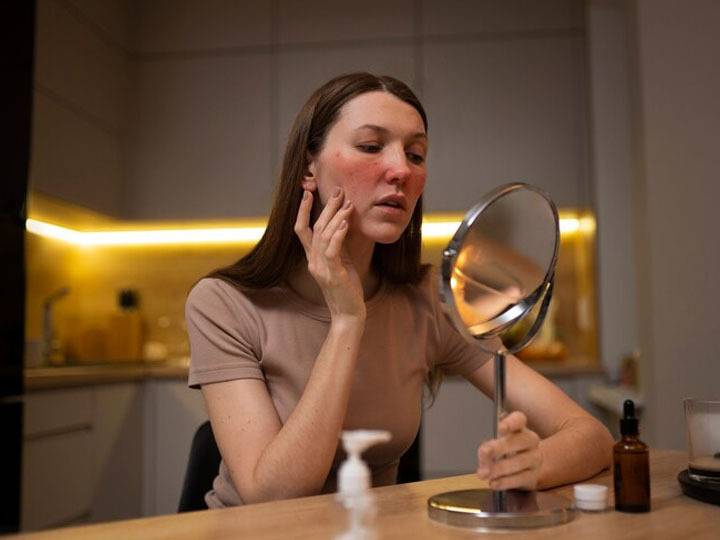Shielding your skin from the damaging UV rays of the sun is essential, and sunscreen plays a pivotal part in providing this protection. It’s frequently emphasized that, along with avoiding cigarette smoking and tanning beds, neglecting sunscreen is among the top contributors to long-term skin damage.
UVA light has the ability to penetrate deep into the skin, affecting the collagen and elastin fibers responsible for maintaining skin elasticity. UVB light affects the epidermis, leading to photoaging, DNA damage, and the development of precancerous cells.
Beyond the serious risk of skin cancer, sun exposure poses various challenges for your skin. Sunburn, a painful short-term condition, is just one aspect. Long-term effects include hyperpigmentation, dryness, leathery skin, and premature wrinkles.
Fortunately, you can proactively prevent sun damage by minimizing sun exposure. Seek shade, cover your skin, wear a hat, and, most importantly, use sunscreen daily to safeguard your skin.
When to Incorporate Sunscreen into Your Skincare Routine
That said, applying sunscreen correctly is crucial; indeed, there are incorrect ways to use it. This is particularly important when determining the timing of sunscreen application within your skincare routine.

Addressing frequently asked questions about sunscreen and debunking some prevalent SPF myths!
What is SPF?
SPF, or sun protection factor, indicates how well a sunscreen guards against a particular type of ultraviolet (UV) light known as UVB, responsible for sunburns and skin cancer. UV light consists of three parts: UVC rays (blocked by the Earth’s atmosphere), UVB rays, and UVA rays (contributing to skin cancer and aging). A sunscreen with broad-spectrum coverage provides protection against both UVB and UVA rays.

Which sunscreen is recommended for purchase?
Choose a sunscreen with a minimum SPF of 30 for daily use, and if you’re planning to be outdoors, select a product with an SPF of 60 or higher. In practice, many individuals don’t apply sunscreen as generously as recommended so that a higher SPF can make up for the lower application amount.
What is the appropriate amount of sunscreen to use on my face?
The efficacy of your SPF depends significantly on applying the correct amount. Adults are recommended to use 5 mL for each arm, leg, front, and back of the body, as well as the face (including the neck and ears). In total, this adds up to 35mL, approximately seven teaspoons, if you’re covering your entire body and face.
Should I put on sunscreen before or after applying moisturizer?
Emphasizing once again: Apply SPF after your moisturizer (and any other skincare products)! SPF should be the last step in your skincare routine.
Thinking about wearing makeup? Go ahead and apply your glam after your sunscreen has been absorbed.

Here’s a summary of the sequence for layering your skincare products, including sunscreen:
- Cleanser
- Exfoliant (if using one)
- Serum
- Mist (if using one)
- Moisturiser
- SPF
- Makeup
If I put on sunscreen in the morning, is it sufficient for the entire day?
No, sunscreen, unfortunately, doesn’t provide all-day protection and degrades over time, becoming less effective. It is recommended to reapply sunscreen every 90 minutes to 2 hours, with the initial application at least 15-30 minutes before going outdoors. If you’re swimming or sweating, make sure to reapply immediately after rinsing off or towel-drying.

Is it possible to blend sunscreen with moisturizer?
Numerous influencers assert that combining sunscreen with moisturizer yields a pleasing finish on their skin. However, this is not advisable, as moisturizers can diminish the effectiveness of your SPF. Applying sunscreen and moisturizer as distinct steps is recommended unless you use a product marketed as a moisturizer with built-in SPF.
Is the SPF in my foundation sufficient?
When foundation includes SPF, consider it an addition to your sunscreen rather than a substitute. Such combined products often contain a minimal amount of UV-blocking ingredients. To achieve effectiveness, you would need to apply a significant amount, potentially resulting in an unnatural, cakey appearance on your skin.
Do I need to reapply sunscreen if I wash my face?
It hinges on the time of day; if there’s a chance of sun exposure after washing your face, then yes, you should reapply sunscreen. For instance, if you wash your face before going to the gym in the middle of the day. Yet, when cleansing your face at the day’s end, there’s no necessity for reapplication. Just proceed with your evening skincare routine as usual.
Is it preferable to use mineral sunscreens?
Sunscreens are commonly divided into two types: chemical and mineral. Chemical sunscreens incorporate ingredients such as avobenzone, octisalate, octocrylene, and homosalate. On the flip side, mineral sunscreens use either zinc oxide or titanium dioxide. Both types of sunscreens operate in a similar manner, absorbing UV light and converting it into minimal heat. Additionally, mineral sunscreens also reflect a small portion of UV light.

Some individuals may experience a stinging sensation with chemical sunscreens. If you possess sensitive skin or often experience reactions to products, choosing a mineral sunscreen might be a more fitting option. However, it’s worth noting that mineral sunscreens often result in a visible white cast, especially on skin with more pigment.
In the end, it boils down to personal choice. The sunscreen that proves most effective is the one you’ll apply consistently each day.
Bottom Line
Proper sun protection is essential for preventing long-term skin damage, including skin cancer and premature aging. When incorporating sunscreen into your skincare routine, apply it as the final step after moisturizer and before makeup. Reapply every 90 minutes to 2 hours for continued effectiveness, especially if swimming or sweating. Opt for a daily-use sunscreen with an SPF of at least 30, and choose one with an SPF of 60 or higher for prolonged outdoor activities. Be mindful of combining sunscreen with moisturizer, and remember that SPF in foundation is a supplement, not a substitute. Consistent application and adherence to recommended practices play a role in preserving skin health and protection.






